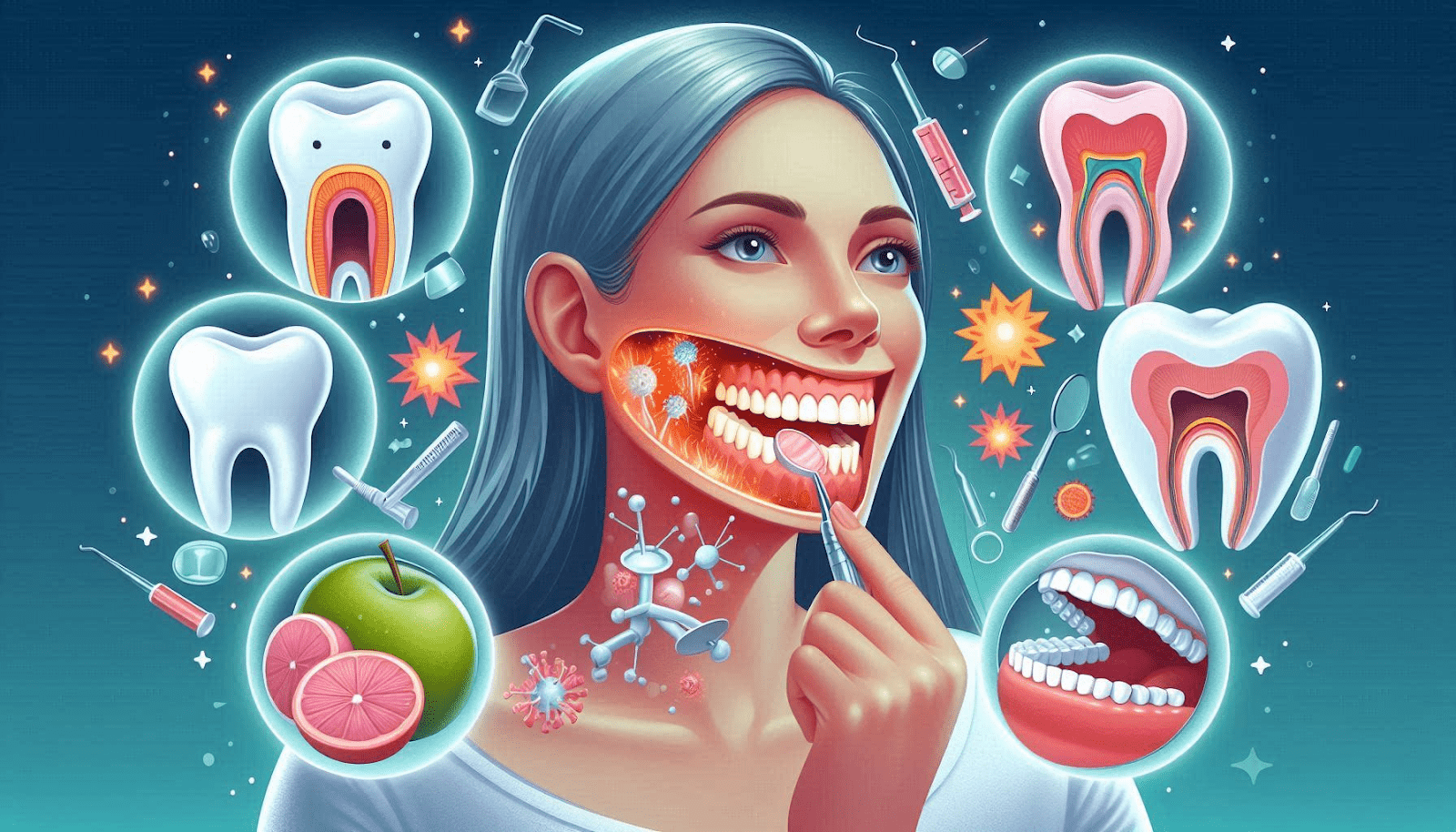Mastering Gum Disease Self-Care: Your Guide to Healthy Gums

Gum disease, also known as periodontal disease, is a common and often overlooked oral health condition that affects millions of people worldwide. Left untreated, it can lead to serious consequences, including tooth loss, bone damage, and even an increased risk of systemic health problems. However, the good news is that with proper self-care, you can effectively prevent and manage gum disease.
In this comprehensive guide, we’ll explore the importance of gum health, and the stages of gum disease, and provide you with practical, expert-backed tips to take control of your oral hygiene and maintain healthy gums for life.
Understanding Gum Disease
Gum disease is an inflammatory condition that affects the tissues surrounding and supporting the teeth. It is primarily caused by the buildup of plaque, a sticky film of bacteria that forms on the teeth. If plaque is not removed through regular brushing and flossing, it can harden into tartar, a harder substance that can only be removed by a dental professional.
Gum disease typically progresses through two main stages:
1. Gingivitis: This is the earliest and most reversible stage of gum disease. During gingivitis, the gums become inflamed, and red, and may bleed easily during brushing or flossing. At this stage, the condition can be effectively managed through improved oral hygiene.
2. Periodontitis: If left untreated, gingivitis can progress to periodontitis, a more advanced and damaging form of gum disease. In this stage, the gums and underlying bone supporting the teeth begin to break down, leading to the formation of pockets between the teeth and gums. This can ultimately result in tooth loss if not properly addressed.
The Importance of Gum Health
Maintaining healthy gums is crucial for your overall oral and overall health. Gum disease has been linked to a variety of systemic health issues, including:
1. Cardiovascular Disease: Research suggests that the inflammation associated with gum disease may contribute to the development of heart disease and stroke.
2. Diabetes: Individuals with diabetes are at a higher risk of developing gum disease, and gum disease can also make it more difficult to control blood sugar levels.
3. Respiratory Infections: Poor oral hygiene and gum disease have been associated with an increased risk of respiratory infections, such as pneumonia.
4. Pregnancy Complications: Gum disease during pregnancy has been linked to an increased risk of preterm birth and low birth weight.
By taking proactive steps to care for your gums, you can not only maintain a healthy and attractive smile but also potentially reduce your risk of these serious health conditions.
Gum Disease Self-Care Strategies
Effective gum disease self-care involves a combination of daily oral hygiene practices and a commitment to a healthy lifestyle. Here are the key steps to take control of your gum health:
1. Brush Thoroughly and Consistently
Brushing your teeth twice a day (morning and night) is the foundation of good oral hygiene. Use a soft-bristled toothbrush and fluoride toothpaste, and take your time to gently clean all surfaces of your teeth, including the gumline. Proper brushing technique is essential, so be sure to hold your brush at a 45-degree angle to your gums and use gentle, circular motions.
2. Floss Daily
Flossing is a critical component of gum disease prevention, as it removes plaque and food debris from areas that your toothbrush can’t reach, such as between the teeth. Aim to floss at least once a day, using a gentle, up-and-down motion to avoid damaging your gums.
3. Use Interdental Cleaners
In addition to brushing and flossing, consider incorporating interdental cleaners, such as dental picks, floss threaders, or interdental brushes, into your daily routine. These tools can help remove plaque and food particles from hard-to-reach areas, further improving your gum health.
4. Incorporate Antimicrobial Mouthwash
Using an antimicrobial mouthwash, such as one containing chlorhexidine or essential oils, can help reduce the bacterial load in your mouth and inhibit the growth of harmful bacteria that contribute to gum disease.
5. Monitor Your Gum Health
Regularly inspect your gums for signs of inflammation, such as redness, swelling, or bleeding during brushing or flossing. If you notice any changes, schedule an appointment with your dentist as soon as possible to address the issue before it progresses.
6. Maintain a Healthy Diet
Your diet can have a significant impact on your gum health. Ensure you’re consuming a balanced, nutrient-rich diet that includes plenty of antioxidants, vitamins, and minerals, such as vitamin C, vitamin D, and calcium. These nutrients help support the health and integrity of your gum tissues.
7. Stay Hydrated
Drinking plenty of water throughout the day can help stimulate saliva production, which plays a crucial role in neutralizing acid and washing away food particles, reducing the risk of gum disease.
8. Quit Smoking
Smoking is a major risk factor for gum disease, as it weakens the immune system and impairs the body’s ability to fight off harmful bacteria. If you smoke, quitting can significantly improve your gum health and overall oral hygiene.
9. Manage Stress
Chronic stress can weaken the immune system and increase inflammation, both of which can contribute to the development and progression of gum disease. Practice stress-management techniques, such as meditation, yoga, or deep breathing, to help maintain a healthy mind and body.
10. Seek Professional Dental Care
Regular visits with your dentist or periodontist (a specialist in gum health) are essential for early detection and treatment of gum disease. During these appointments, your dental professional can perform a thorough cleaning, assess the health of your gums, and provide personalized recommendations for improving your oral hygiene routine.
Putting it All Together: A Gum Disease Self-Care Routine
Implementing a comprehensive gum disease self-care routine can seem daunting, but by breaking it down into manageable steps, you can make it a sustainable part of your daily life. Here’s an example of a suggested routine:
Morning:
– Brush your teeth for 2 minutes, using gentle, circular motions and paying extra attention to the gumline.
– Consider using an antimicrobial mouthwash.
After Meals:
– Floss or use interdental cleaners to remove any food debris or plaque between your teeth.
Evening:
– Brush your teeth for 2 minutes, again focusing on the gumline.
– Floss or use interdental cleaners.
– Consider using an antimicrobial mouthwash.
Weekly:
– Examine your gums for any signs of inflammation or changes.
– Adjust your routine as needed based on your gum health.
Remember, consistency is key when it comes to gum disease self-care. Stick to your routine, and be patient as it may take some time to see the full benefits. If you notice any persistent issues or have concerns about your gum health, don’t hesitate to consult with your dental professional.
Conclusion
Maintaining healthy gums is essential for your overall oral and general well-being. By incorporating effective gum disease self-care strategies into your daily routine, you can prevent the onset and progression of this common, yet serious, condition.
Remember, gum disease is a treatable and often reversible condition, but it requires your active participation and commitment to good oral hygiene. By brushing, flossing, using antimicrobial products, and visiting your dentist regularly, you can take control of your gum health and enjoy a lifetime of a beautiful, healthy smile.





